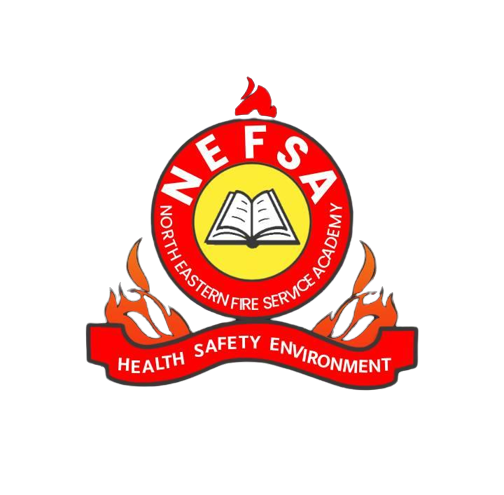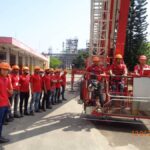Choosing a career at a fire academy is choosing public service, technical skill and job stability. For students in the North-East and across India, NEFSA (North Eastern Fire Service Academy) offers a practical, recognized pathway into firefighting and safety management — combining classroom theory, live-fire practicals, and placement support that employers want.
1. Government-aligned courses and recognized certification
NEFSA runs courses built to meet national training expectations for operational firefighters, safety officers and instructors. Training that follows national standards helps graduates clear government recruitment and land roles in municipal fire services, industrial safety departments and government establishments. That alignment increases employability from day one.
2. Hands-on, realistic training not just theory
What sets NEFSA apart is the emphasis on practical, live-fire training. Trainees practice hose handling, ladder operations, breathing apparatus, rescue drills and incident management in controlled but realistic conditions the kind of muscle-memory work that saves lives during real emergencies. These practical modules are essential: employers value people who can perform under pressure.
3. Placement support and industry connections
NEFSA maintains placement assistance and industry links that help convert training into jobs. Their placement pages and academy communications show active outreach to municipal services, private industry and safety firms — shortening the bridge between campus learning and employment. For many students, placement support is the deciding factor between training and a working career.
4. India needs trained firefighters demand is strong
Beyond the academy’s strengths, the external environment makes firefighting a growth sector. Recent reporting and industry commentary highlight major shortfalls in India’s fire infrastructure and staffing large gaps that create real job opportunities for trained personnel. For example, industry voices have pointed to severe shortages in fire stations and trained manpower across many states. That structural demand raises the value of a practical, accredited training program like NEFSA’s.
5. Modern training trends simulators, multi-agency drills, and specialization
Fire training in India is modernizing: states and training bodies are investing in simulator centres, urban rescue training and multi-agency exercises to rehearse complex incidents. NEFSA’s curriculum and hands-on approach position graduates to benefit from and work with these evolving capabilities, from hazmat response to high-rise rescues. Investing in simulation and realistic drills is a national trend that improves readiness and career prospects.
6. A career with options – where NEFSA graduates go
NEFSA graduates typically find roles in:
-
Municipal and state fire services (entry-level firefighter to supervisory posts).
-
Industrial safety departments in manufacturing, oil & gas, and large facilities.
-
Private safety & security firms and emergency response contractors.
-
Training and instructor roles at academies or corporate safety teams.
Because NEFSA emphasizes recognized certifications and practical skills, graduates are credible candidates for a wide range of fire & safety roles.
7. How NEFSA prepares you? – the student action plan
If you’re considering NEFSA, here’s a simple plan to get the most from the academy:
-
Choose the right entry course – start with a Basic Firefighter course if you’re new; progress to supervisory or specialist modules later.
-
Prioritize fitness & medicals – many recruitments require physical and medical clearance. Train early.
-
Master practical skills – focus on live drills, breathing apparatus, rescue basics and incident command exercises.
-
Use placement support – attend institute job fairs, apply for municipal/state recruitments, and network with alumni.
-
Upskill with specializations – hazmat, industrial firefighting, or instructor courses boost employability (and pay).
8. Community impact and respect
A firefighting career is socially meaningful. Fire & safety professionals protect lives, limit property loss, and support community resilience – often earning deep local respect. NEFSA not only trains technically competent responders but prepares professionals who serve their communities with skill and dignity.
Conclusion – Why choose NEFSA?
If you want a practical, government-aligned, hands-on path into fire & safety work, NEFSA is an outstanding starting point. With real drills, recognized certification, placement support, and a national environment hungry for trained personnel, NEFSA gives you both the skills and the opportunity to start a secure, respected career in fire & safety.
Sources
-
NEFSA – official site and course/placement information. nefsaindia.com+1
-
National Fire Service College (NFSC) – national training standards and professional courses. nfscnagpur.nic.in
-
Times of India – reporting on India’s fire infrastructure and staffing shortages (industry commentary). The Times of India+1
-
NDMA – national fire safety guidance and preparedness recommendations. National Disaster Management Authority
-
Times of India – state investments in simulator training centres and modern training initiatives. The Times of India







